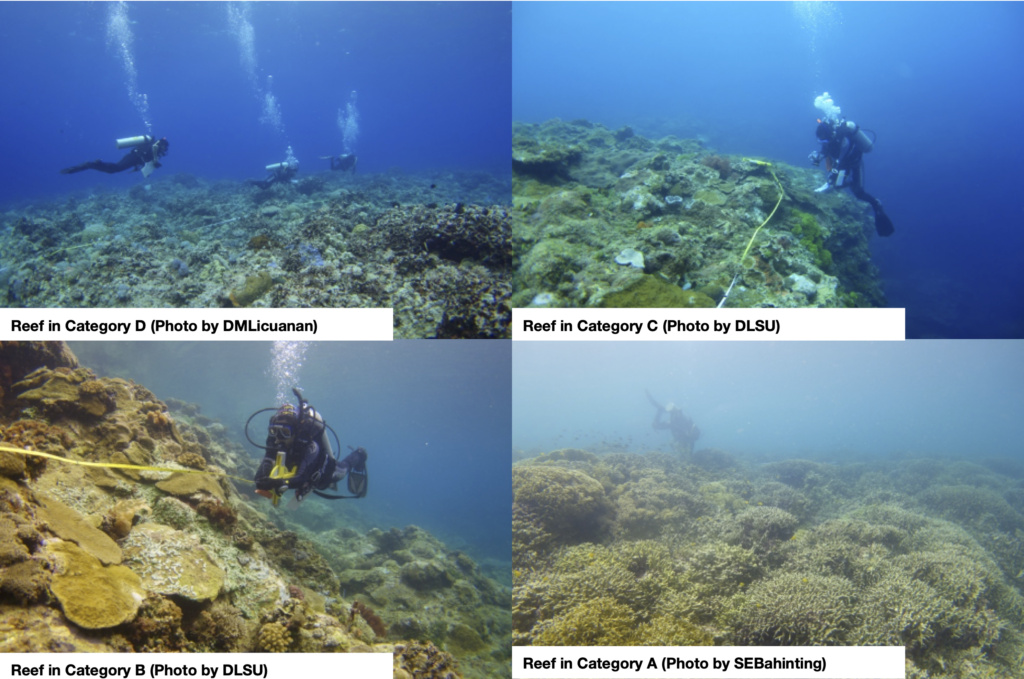
After a crown of thorns infestation in 2019 followed immediately by consecutive typhoon events, extensive rubble fields have developed in ARNP which have become traps for recruiting hard corals because of their relative instability. Parameters to measure substrate stabilization in this high energy area was determined using an experimental set-up that would allow for temporal measurement of percent substrate binding and binding strength among loose rubble. Half of the set-up was seeded with a vertical sponge to facilitate binding while the other half remained unseeded. Initial results showed four important results. These findings are:
- Substrate stabilization, as a restoration strategy, has a low chance of success in wave-exposed sections of a high energy offshore reef environment.
- Sponge assisted substrate stabilization is a better option in stabilizing loose rubble in relatively wave sheltered offshore reef environment, compared to un-assisted, natural substrate binding.
- Percent rubble that was observed to cement after 11 months was low and ranged from only 14% to 17% of the total rubble.
- Developing significant binding between rubble fragments takes time in a high energy coral reef area. In the study, significant binding across set-ups was only observed after 11 months, with binding strength ranging from 0.61 N/g2 to 6.80 N/g2.
(SMaRT Corals Project, Dr. Victor S. Ticzon/UPLB-IBS)


